Blank pulling - the blank mud is placed on the reel (that is, on the wheel), and the power of the reel rotation is used to pull the blank mud into the desired shape with both hands, which is the traditional method of ceramics production in China, and this process is called billet. Discs, bowls and other round ware are formed by the blank drawing method.
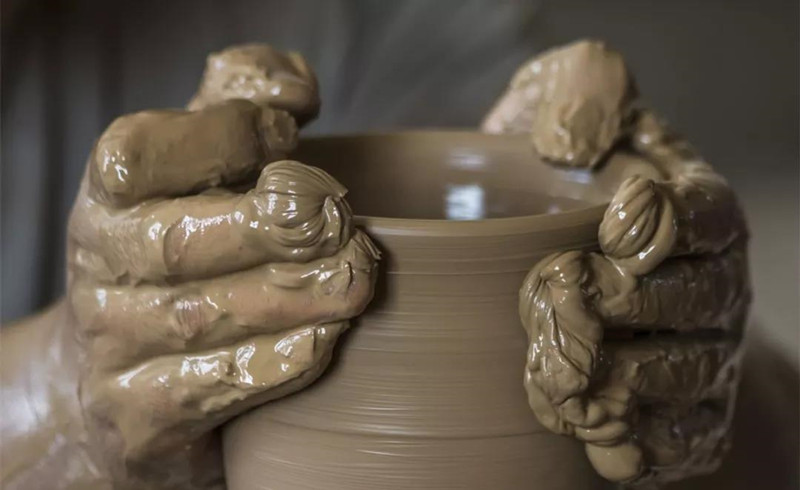
Hand-drawn pottery
Billet - when the drawn blank is semi-dry, it is placed on the reel and trimmed with a knife to make the surface smooth, thick and even, this process is called billet.
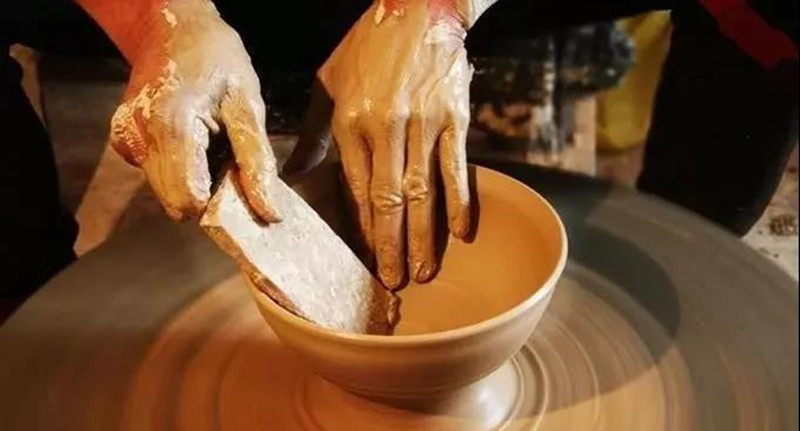
Digging foot - when the round instrument is pulled blank, a 3-inch long mud target (handle) is left at the bottom, and then the bottom foot of the digging vessel is dug into the bottom foot, this process is called digging foot.
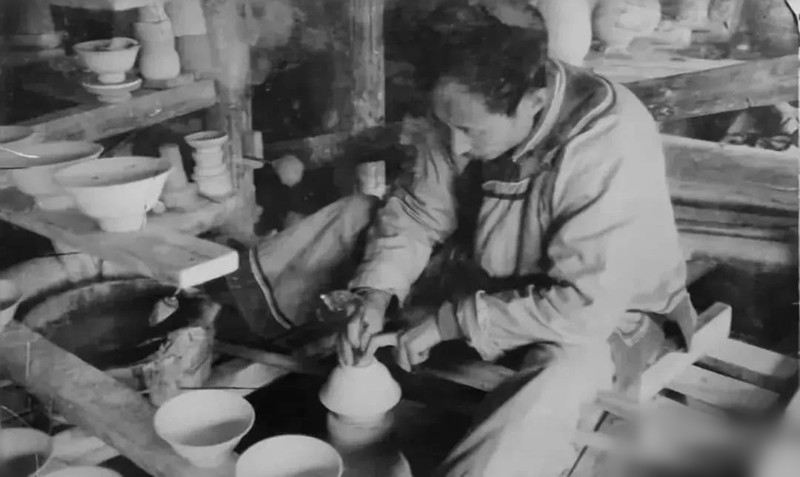
Clay strip building – a primitive method of pottery molding. When making, the mud is first rolled into long strips, and then formed from the bottom up according to the requirements of the shape, and then the inside and outside are smoothed out by hand or simple tools to make it into a vessel. Pottery made in this way often leaves traces of mud discs on the inner walls.
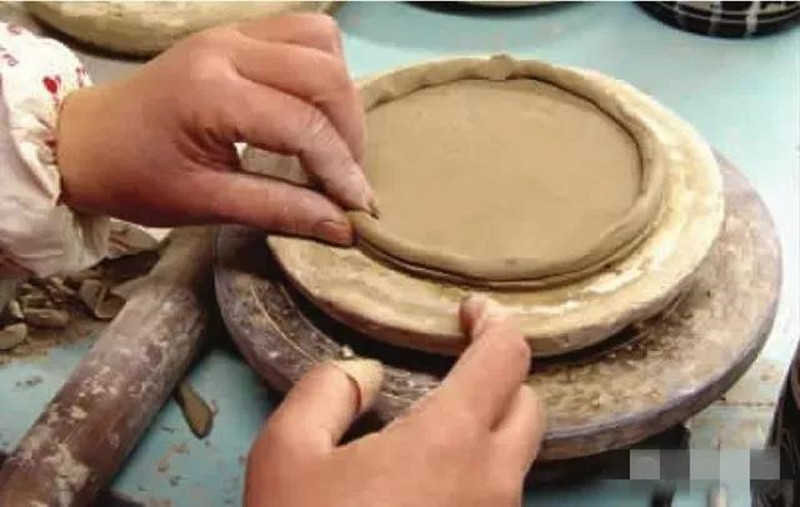
Wheel system - the method of making ceramics with wheeled wheels, the main component is a wooden round wheel, there is a vertical shaft under the wheel, the lower end of the vertical shaft is buried in the soil, and there is a hub to facilitate the rotation of the wheel. Using the rotational force of the wheeler, use both hands to pull the blank mud into the desired shape. The rotation method began in the late Neolithic Dawenkou culture, and the artifacts produced were regular in shape and uniform in thickness.
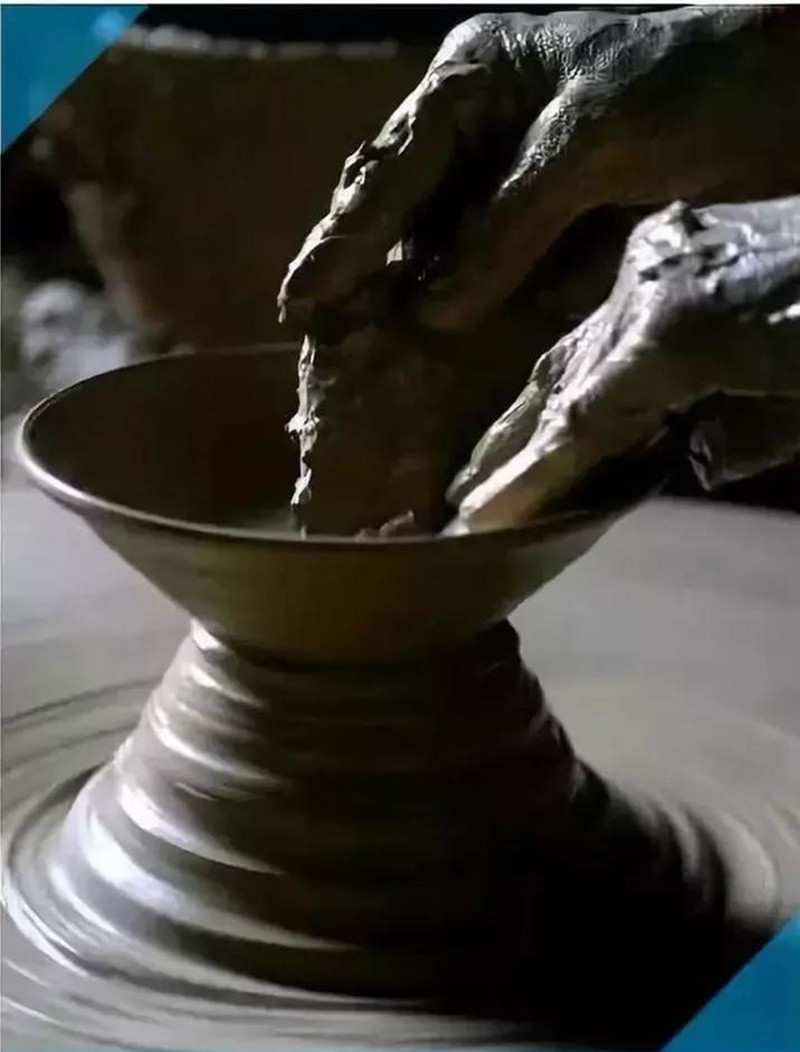
Backfiring – a method of firing porcelain. Cushion cakes or high-temperature resistant fine sand are placed in the box, and the utensils are roasted in a formal manner, which is called backburning.
How to stack triangular gaskets in the backfiring process
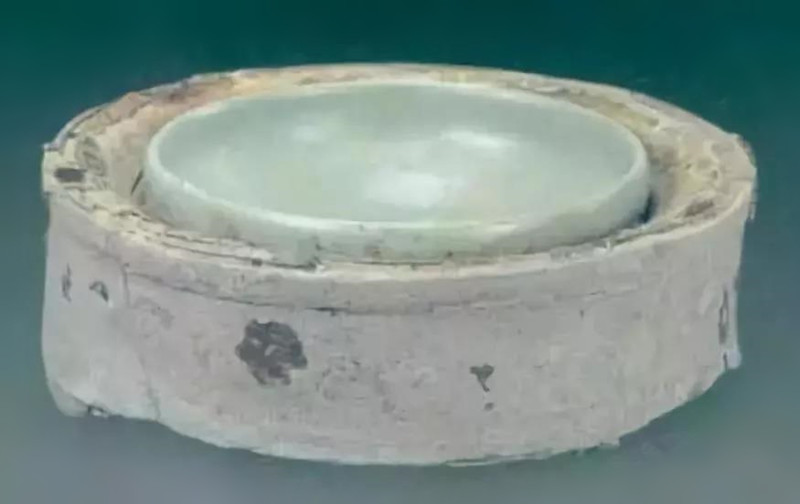
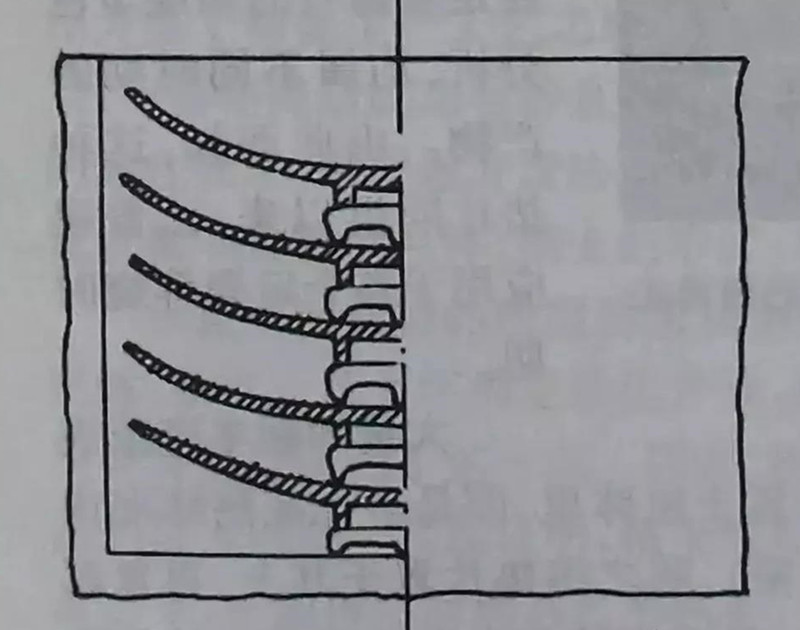
Stacking – a method of firing porcelain. That is, multiple pieces of ware are stacked together and burned, and the utensils are spaced apart to pad the burnt objects. It can be divided into:
(1) Stacking of nails, this method was used in ancient times;
(2) Stacked firing of branch circles, such as fixed kilns;
(3)Overlapping or scraping glaze stacking, that is, scraping off a circle of glaze in the heart of the utensil (mostly plates and bowls), and then scraping off a circle of glaze from the stacked burning utensil, and then placing the bottom foot (unglazed) of the stacked ware on it, generally about 10 pieces overlapping layer by layer, and this method is prevalent in Jindai products.
Overfiring – a method of firing porcelain. That is, porcelain is covered and roasted in a box with a support ring or a barrel trapezoidal brace, which began in the Northern Song Dynasty and was also used in the Qingbai porcelain kiln system in Jingdezhen and the southeast region. The advantages are high yield and small deformation; The disadvantage is that the mouth of the utensil is unglazed, which is inconvenient to use.
Vegetarian firing - refers to the ceramics that need to be fired twice, that is, first enter the kiln to fire the blank at a low temperature (about 750~950 °C), called vegetarian firing, and then, glaze again into the kiln to fire. It can increase the strength of the green body and improve the authenticity rate.
Astringent circle - before the porcelain blank is stacked, the inside of the utensil is scraped off a circle of glaze, and the unglazed place is called "astringent circle", which was popular in the Jin and Yuan dynasties.
Dip glaze - Dipped glaze is one of the ceramic glazing techniques, also known as "dipping glaze". The green body is immersed in the glaze for a while and then removed, and the water absorption of the green is used to make the glaze paste adhere to the blank. The thickness of the glaze layer is controlled by the water absorption of the blank, the concentration of the glaze slurry, and the maceration time. It is suitable for glazing thick tire body and cup and bowl products.
Glaze blowing - is one of the traditional glazing methods in China. Cover with a bamboo tube with fine yarn, dip in glaze and blow it with your mouth, the number of glaze blows depends on the size of the utensil, up to 17~18 times, as little as 3~4 times. Its advantages make the glaze inside the utensils uniform and consistent, and this method is mostly used for large utensils, thin tires and glazed products. It was pioneered in Jingdezhen in the Ming Dynasty.
Glazing - a glazing process for large objects, is one of the traditional glazing methods in China. Hold a bowl or spoon in each hand, scoop the glaze paste, and pour it over the green body.
Glaze - one of the traditional glazing methods in China. During the operation, the glaze paste is poured into the inside of the blank, and then shaken, so that the upper and lower left and right are evenly glazed, and the excess glaze paste is poured out, this method is suitable for bottles, pots and other tools.
Printing – a decorative technique for ceramics. An impression engraved with a decorative pattern is printed on the green body when it has not yet dried, hence the name. During the Spring and Autumn and Warring States periods, printed hard pottery has been widely used, and since then, it has become one of the traditional decorative techniques of ceramics in China. Ding kiln printing porcelain of the Song Dynasty is the most representative.
Scratching - a decorative technique of porcelain. Use a pointed tool to mark lines on the porcelain blank to decorate the pattern, hence the name. It flourished in the Song Dynasty, with flowers, birds, figures, dragons and phoenixes.
Carving - a decorative technique of porcelain. Use a knife to carve a decorative pattern on the porcelain blank, hence the name. It is characterized by greater force, and the lines are deeper and wider than the strokes. It flourished in the Song Dynasty and was most famous for the carved flower artifacts of the Yaozhou kiln in the north.
Flower picking - a decorative technique of porcelain. On the porcelain blank where the pattern is drawn, the part other than the pattern is removed to make the pattern convex, hence the name. It began in the northern Cizhou kiln system in the Song Dynasty, with brown white flowers as the most distinctive. During the Jin Yuan period, porcelain kilns in Shanxi were also quite popular, and the black glaze flowers were unique.
Pearl Ground Scratching – a decorative technique for porcelain. On the scratched porcelain blank, the gap is filled with fine and dense pearl patterns, so the name, starting from the late Tang Henan Mi County kiln, the Song Dynasty popular Henan, Hebei, Shanxi porcelain kilns, Henan Dengfeng kiln products are the most distinctive.
Appliqué - a decorative technique for ceramics. Using molding or kneading and other methods, various patterns are made from tire mud, and then pasted on the green body, hence the name. The green-glazed brown appliqués of the Tang dynasty and sand kilns, as well as the decoration of Tang Sancai appliqués from the kilns of Gongxian County, Henan, are all famous.
Paper cut appliqué - a decorative technique for porcelain. Paper cutting is a traditional folk art in China, which transplants paper-cutting patterns to porcelain decoration, hence the name. The original Jizhou kiln in Jiangxi Province in the Song Dynasty, in the black-glazed teapot, decorated with plum blossoms, wood leaves, phoenixes, butterflies and other patterns, the paper-cutting effect is remarkable, with strong local characteristics.
Makeup clay – a way to beautify the color of the tire. In order to compensate for the influence of the color of the porcelain tire, a layer of white porcelain clay is applied to the tire blank to make the tread smooth and white, so as to improve the color of the glaze, and the porcelain clay used in this method is called cosmetic clay. Cosmetic clay began in the Western Jin Dynasty in Wuzhou kiln celadon in Zhejiang, northern white porcelain was widely used in the Sui and Tang dynasties, and the use of Cizhou kiln porcelain in the Song Dynasty was also common, especially the culling varieties were used more.
Gold tracing - a decorative technique of ceramics. It is painted on ceramics in gold and then fired, hence the name. The Song Dynasty Ding Kiln has white glaze gold tracing and black glaze gold tracing ware, and according to documents, the Song Dynasty Ding Kiln "painted with garlic juice with gold". Since then, gold paintings on Liao, Jin, Yuan, Ming and Qing porcelain have been seen.
Purple iron foot - a decorative feature of porcelain. Some varieties of Southern Song Dynasty official kiln, heirloom kiln and Song Dynasty Longquan kiln, because the fetal bone has a high iron content, when burned in a reducing atmosphere, the glaze of the mouth of the vessel flows under water, and the fetal color is purple when the glaze layer is thin; The exposed part of the foot is iron-black, which is the so-called "purple iron foot".
Gold wire wire - a decorative feature of porcelain. Heirloom kiln porcelain, due to the different expansion coefficient of the tire glaze during firing, forms glazed open pieces, large grain pieces appear black, small grain pieces appear golden yellow, one black and one yellow, that is, the so-called "gold wire iron wire".
Opening - due to the different expansion coefficient of tire glaze during firing, individual varieties of Song Dynasty official kilns, heirloom kilns and Longquan kilns have open characteristics. After the Song Dynasty, Jingdezhen kilns also had imitation burning.
Ribs - a decorative feature of porcelain. Southern Song Dynasty Longquan kiln celadon, some parts of the production of strips protruding, when glazing the glaze is particularly thin, the color is light, contrast, that is, the so-called ribs.
Earthworm walking mud pattern - a glazed feature of porcelain. When the porcelain blank is glazed and dried, the glaze layer produces cracks, and the glaze flows during the firing process to bridge the cracks, resulting in traces left after the earthworm creeps away from mud, hence the name. It is a unique feature of Jun kiln porcelain in Yu County, Henan Province in the Song Dynasty.
Crab claw pattern – a glazed feature of porcelain. Due to the glazing of the utensils, the thick glaze droops to form traces left after tears, hence the name, which is one of the characteristics of white porcelain glaze in the Ding kiln of the Song Dynasty.
Jomon - one of the decorative patterns of Neolithic pottery. It is named because the pattern is shaped like a knotted rope pattern. Pottery pats wrapped around rope or engraved with a rope pattern are used on a pottery blank that has not yet dried, and after firing, a Jomon pattern is left on the surface of the utensil.
Geometric pattern - one of the decorative patterns of ceramics. Points, lines, and surfaces form a variety of regular geometric figures, hence the name. Such as triangle pattern, grid pattern, checkered pattern, zigzag pattern, circle pattern, diamond pattern, zigzag pattern, cloud thunder pattern, back pattern, etc.






